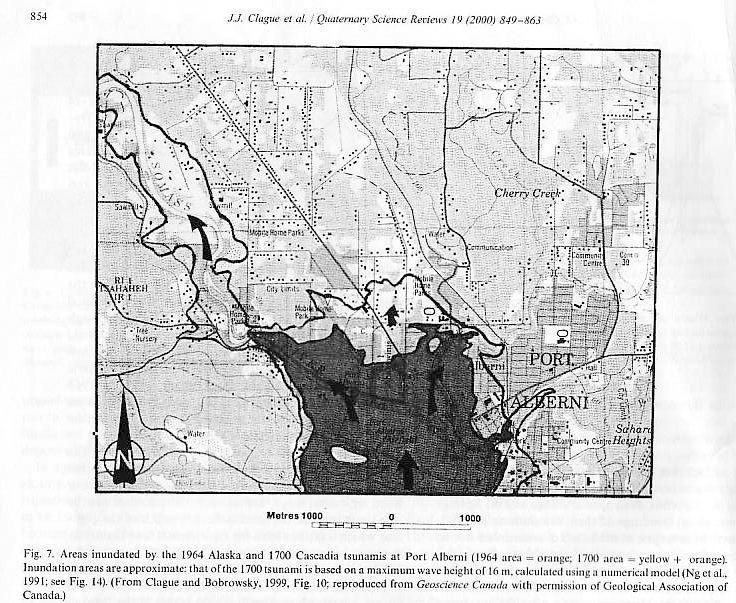Dear Editor,
(The letter was sent on January 29, 2020. It has not been published yet)
I normally agree heartily with Mr Jardin’s letters so it is with some surprise that I felt compelled to write today regarding the need to relocate the City’s works yard. (T. Lyman Jardin: “Relocating Port Alberni’s public works yard ‘below low priority‘”)
Mr. Jardin makes a good point that the railway acts as a berm. However, as we saw in Fukushima, disaster was created not by the mega-thrust earthquake, but rather documents and testimony from engineers indicate the wall built was just shy of recommendations.
(quote below added for this blog post)
“What doomed Fukushima Daiichi was the elevation of the EDGs (emergency diesel generators),†the authors wrote. One set was located in a basement, and the others at 10 and 13 meters above sea level — inexplicably and fatally low, Synolakis said.
….
Synolakis and Kânoğlu report that the Tokyo Electric Power Co. (TEPCO), which ran the plant, first reduced the height of the coastal cliffs where the plant was built, underestimated potential tsunami heights, relied on its own internal faulty data and incomplete modeling and ignored warnings from Japanese scientists that larger tsunamis were possible.
Japan provides us the precise timing of the last mega-thrust earthquake on the West Coast: around 9PM on January 26, 1700. This event is etched into Nuu-cha-nulth oral and living histories. That earthquake created a series of inundations up to 16 metres (52ft) high. This informs the worst case envisioned by scientists as a 20 metre inundation zone. The railway is about 15 metres elevation at Rogers Street. The tsunami in 1700 washed up all the way to Glenwood Drive. Imagine Rogers Creek flowing backwards nearly one third the way up under the railway trestle.
(image below added for the blog post, taken from this article dark shaded area is 1964 inundation zone, black line is estimated 1700 inundation zone)

If the paper mill ever closed, you can expect BC Hydro to move the substation out of the inundation zone. Their new office was built on Tebo. The old BC Tel building and yard on 6th sits nearly derelict. The new RCMP building is between 8th and 9th Avenue.
There is no reason for panic, however, good planning means making a move when the time is right, as other agencies have done. A tsunami could happen tomorrow, or 100 years from now when sea levels are one or two metres higher. The City Works buildings and yard are in need of replacement or complete renovation today. It is prudent of the City to find a location where there is much less chance of becoming part of any future disaster.
Sincerely,
Chris Alemany
P.S. John Cassidy, “@EarthquakeGuy” on Twitter, is a Canadian Government Earthquake Scientist. He is a great follow and tweeted some great information from other scientists about the 1700 Cascadia earthquake on its anniversary this past weekend.

You must be logged in to post a comment.